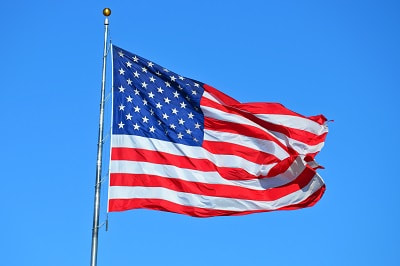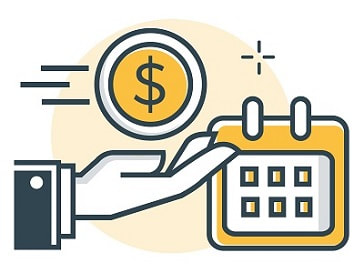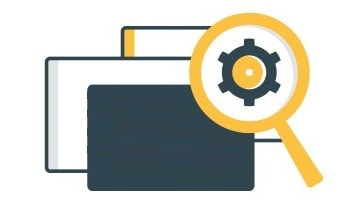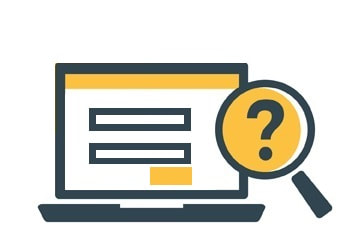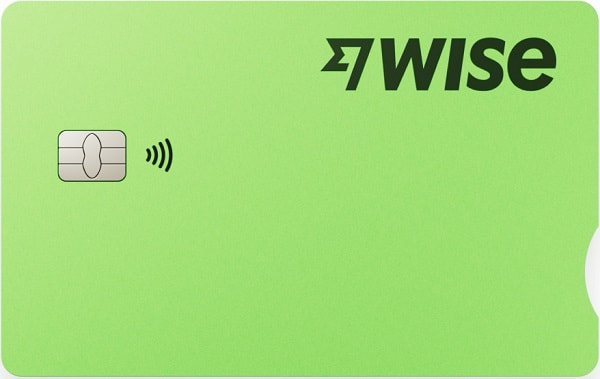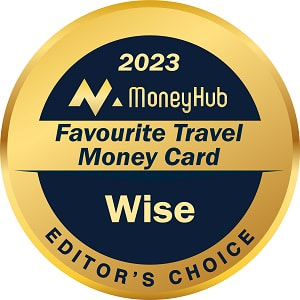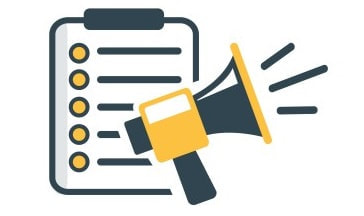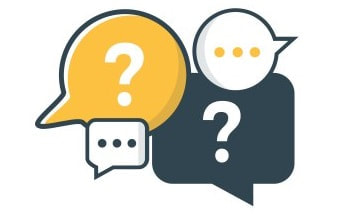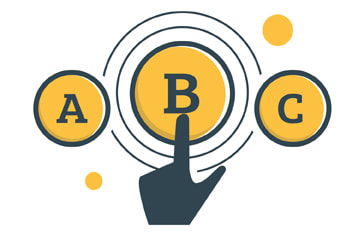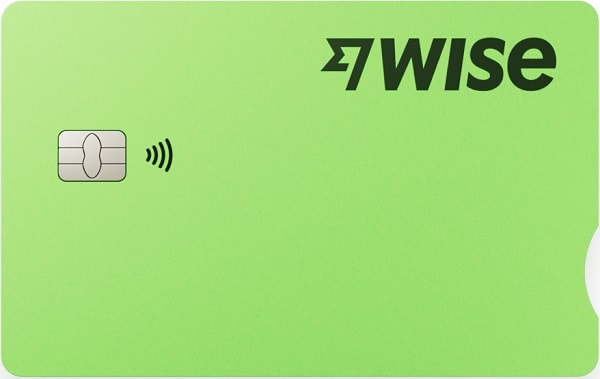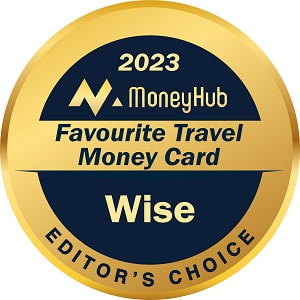USA Travel Money - Best Options for Kiwis 2024
Our guide outlines everything you need to know about spending money in the USA, specifically cash vs debit and credit cards vs travel money cards.
Updated 3 January 2024
Summary:
Our guide explains everything you need to know to make travelling in the USA a cost-effective experience. We cover:
Advertising disclosure: We may receive a payment if you sign up for a card via MoneyHub - please read our advertising policy for more details.
Related guide: The Best Travel Money Cards
- The USA is a popular year-round with New Zealanders, but the costs of visiting are high. California and New York are among the most expensive, and it's not uncommon to pay NZ$30 for a coffee and cake and NZ$50 for a burger at a restaurant (including tips).
- Tipping is expected (and arguably unavoidable) in most restaurants and bars, with 15% being the minimum (and 25% being the average).
- Most Americans pay by card and businesses big and small accept cards - using cash is rare. If you pay by card at a restaurant or bar, you'll be prompted to select a tip amount, usually expressed as 15%, 20%, 25% of the bill.
- The official currency of the USA is the US Dollar, often represented as USD or with the "$" symbol locally. Over the past year, the exchange rate for NZD to USD has seen some fluctuations, but on average, 1 NZD hovers between 0.55 and 0.70 USD. As the NZD weakens, a trip to the USA gets more expensive, and vice versa.
- Most New Zealanders will pre-book and/or pre-pay hotels, AirBnB and car rental, but on-the-ground costs can be a lot more than prepaid costs. For this reason, having the most economical and convenient payment method for the USA makes every dollar go further.
- We are confident in suggesting that America is increasingly cashless, and that cards are widely preferred as the method of payment. Any card-accepting business will accept Mastercard and Visa, and research from CNBC published in August 2023 suggests 99% of businesses who accept Mastercard and Visa will accept AMEX.
Our guide explains everything you need to know to make travelling in the USA a cost-effective experience. We cover:
- Option 1 - Using Cash in the USA
- Option 2 - Using NZ-Issued Debit and Credit Cards in the USA
- Option 3 - Using Travel Money Cards (Including the Wise Debit Card) in the USA
- Must-Know Facts for Using Money in the USA
- NZD to USD Conversion and Spending USD - Frequently Asked Questions
- Our Conclusion
Advertising disclosure: We may receive a payment if you sign up for a card via MoneyHub - please read our advertising policy for more details.
Related guide: The Best Travel Money Cards
Option 1 - Using Cash in the USA
If you want physical USD notes before leaving New Zealand for the USA, you have a couple of options:
Getting USD Cash from an NZ Bank: Most NZ banks have stopped offering FX cash services; Westpac is currently the only provider, but you'll need to be an existing Westpac customer to swap NZD for USD notes.
Getting USD Cash from a Beaurau de Change/Forex Booth:
The primary operators are travel money booths like Travelex and No1 Currency. However, the FX rates are well below mid-market rates, meaning you'll get less USD for your NZD than you otherwise would if you used Westpac's services or withdrew USD from an ATM once you're in the USA.
Getting USD Cash When You Arrive in the USA:
If you want to have physical American Dollars on hand for your arrival, there are ATMs in the arrivals areas and arrival concourses of all American airports. However almost every US-based bank charges an ATM fee, which is usually around US$3 to US$5 and deducted from your bank account when you withdraw. Despite extensive comparison, it seems no US-based bank offers New Zealanders a free withdrawal from their NZ-based bank account.
Our View: We've found that the FX rates at Forex booths aren't as favourable as those offered by Westpac (for USD and other currencies). Furthermore, Westpac's USD rates aren't as good as those from Wise. In practical terms, if you use Wise to withdraw money from an ATM in the USA, you'll get an extra US$2 or US$3 for every NZ$100 you take out (compared to changing it with the FX booths), thanks to Wise's superior rates and lower fees.
Bonus: The Wise Debit Card offers withdrawals of up to NZ$350 per month without charging a transaction fee, meaning you can withdraw up to around US$200 in cash without paying FX transaction fees (after NZ$350, it's a flat 1.75% fee). However, as most American ATMs charge a fee to use their service, you'll usually be charged around US$3 to US$5 per ATM withdrawal.
Getting USD Cash from an NZ Bank: Most NZ banks have stopped offering FX cash services; Westpac is currently the only provider, but you'll need to be an existing Westpac customer to swap NZD for USD notes.
Getting USD Cash from a Beaurau de Change/Forex Booth:
The primary operators are travel money booths like Travelex and No1 Currency. However, the FX rates are well below mid-market rates, meaning you'll get less USD for your NZD than you otherwise would if you used Westpac's services or withdrew USD from an ATM once you're in the USA.
Getting USD Cash When You Arrive in the USA:
If you want to have physical American Dollars on hand for your arrival, there are ATMs in the arrivals areas and arrival concourses of all American airports. However almost every US-based bank charges an ATM fee, which is usually around US$3 to US$5 and deducted from your bank account when you withdraw. Despite extensive comparison, it seems no US-based bank offers New Zealanders a free withdrawal from their NZ-based bank account.
Our View: We've found that the FX rates at Forex booths aren't as favourable as those offered by Westpac (for USD and other currencies). Furthermore, Westpac's USD rates aren't as good as those from Wise. In practical terms, if you use Wise to withdraw money from an ATM in the USA, you'll get an extra US$2 or US$3 for every NZ$100 you take out (compared to changing it with the FX booths), thanks to Wise's superior rates and lower fees.
Bonus: The Wise Debit Card offers withdrawals of up to NZ$350 per month without charging a transaction fee, meaning you can withdraw up to around US$200 in cash without paying FX transaction fees (after NZ$350, it's a flat 1.75% fee). However, as most American ATMs charge a fee to use their service, you'll usually be charged around US$3 to US$5 per ATM withdrawal.
Using USD Cash - Pros and Cons
Pros:
Cons:
- Universal Acceptance: Cash is king no matter where you go in the USA. However, with technology at the heart of American economy, debit and credit cards, alongside Apple Pay and Google Pay, will be most commonly used.
- Immediate Transactions: There's no risk of card machine issues, declined transactions or fraud on your card.
Cons:
- Safety Concerns: Carrying large amounts poses a risk, especially in crowded areas. However, you can always leave a portion of USD in a hotel room safe or keep it somewhere secure on you.
- Airport Exchange Woes: While convenient, exchanging NZD to USD at the airport can be costly if you use a high-fee debit card at an ATM or get a bad rate at the Forex kiosk in New Zealand or in the USA. This is because rates are often marked up, and there might be hidden commission fees, reducing the amount of USD you receive for every NZD you change.
If I have spare US Dollars on the last day I'm in America, what should I do with them?
- Spare notes and coins have a habit of gathering dust back in New Zealand, and it may be some time before you visit the USA again. The best way to avoid having leftover currency is to spend the notes and coins on your last day; many people make a part payment alongside their card to settle a final bill, for example a lunch or dinner, before they fly out. Or you can put the cash towards the hotel bill if you're settling the bill at the end of your stay.
- You can convert them back to NZD at most airports serving Air New Zealand or when you return to New Zealand. The USD/NZD rate isn't likely to be market-leading at an FX kiosk. However, having NZD you can spend is more useful than USD notes that sit there, so it's a cost worth incurring.
- Lastly, if you know someone visiting the USA in the future, giving them USD notes and coins makes for a nice present they'll appreciate.
Option 2 - Using NZ-Issued Debit and Credit Cards in the USA
Most New Zealanders will use a debit and/or credit card widely when in the USA
What Do New Zealand Banks Charge for Card Use? Most banks impose foreign transaction fees ranging from 0% to 3.5% of the total transaction amount. This fee is atop the exchange rate margin the bank adds to the daily exchange rate. Some banks might also charge a flat fee for overseas ATM withdrawals.
For example, if you're using an ANZ Visa Debit or credit card, you'd typically incur a fee of 1.30% of the transaction amount when you make a purchase overseas per the ANZ's website while Kiwbank's debit cards will charge you 2.50%. If you withdraw from an ATM, you might also pay an additional overseas ATM fee.
More details: Detailed bank charges are in our Debit and Credit Cards FX Fee comparison.
What Do New Zealand Banks Charge for Card Use? Most banks impose foreign transaction fees ranging from 0% to 3.5% of the total transaction amount. This fee is atop the exchange rate margin the bank adds to the daily exchange rate. Some banks might also charge a flat fee for overseas ATM withdrawals.
For example, if you're using an ANZ Visa Debit or credit card, you'd typically incur a fee of 1.30% of the transaction amount when you make a purchase overseas per the ANZ's website while Kiwbank's debit cards will charge you 2.50%. If you withdraw from an ATM, you might also pay an additional overseas ATM fee.
More details: Detailed bank charges are in our Debit and Credit Cards FX Fee comparison.
Using NZ Bank Cards - Pros and Cons
Pros:
Cons:
Our View:
Related guide: The Best Travel Money Cards
- Convenience: Your NZ debit or credit card (and travel money card) is versatile and widely accepted in every American business. Whether booking tours, paying for hotel stays, or dining out, the card covers you.
- Tracking: One underrated advantage is the ability to track your expenses. With mobile banking apps, you can keep tabs on your spending, set budgets, and even receive instant transaction alerts. The USA is going to be expensive for most New Zealanders; keeping track of your spending in essential.
Cons:
- Unpleasant Surprises: The cost of convenience can be high, and what NZ banks charge their customers to use a card overseas varies. The combined effect of foreign transaction fees and the bank's exchange rate margin can result in you paying significantly more than expected. Make sure you know the fees you'll be charged by reading your bank's website - our summary of overseas debit and credit card fees explains more.
- Dynamic Currency Conversion (DCC) Pitfalls: Sometimes you are offered to pay in NZD instead of USD at card terminals in America. It might seem tempting to accept the NZD amount, but this service, called DCC, will almost always result in higher costs as the provider takes a margin, and the exchange rates used are often less favourable, and there might be hidden fees as well. When you agree to pay in USD, you'll always get the bank or travel money card's best FX rate.
- Potential Card Issues: There's always a risk of your card being declined, skimmed, or even captured by ATMs. While these issues are rare, a backup card is good - we don't believe you need USD notes and coins as long as you have one or two backup cards.
Our View:
- While using a New Zealand bank debit or credit card in the USA offers undeniable convenience, too many New Zealanders pay far too much in bank fees.
- It's not unreasonable to spend around NZ$5,000 for a family holiday week in the USA which makes it an expensive place to be. Paying $150+ in bank fees and getting bad NZD/USD rates during the week is best avoided. Some banks are fair, but most fee-gauge and charge you a small (but still hefty) percentage on every time your card is used.
- Please double-check the fees associated with your specific bank and consider alternative options like travel-specific or multi-currency cards that offer better rates and fewer fees.
Related guide: The Best Travel Money Cards
Option 3 - Using Travel Money Cards (Including the Wise Debit Card) in the USA
Know This First: Our review and comparison of travel money cards confirms Wise as the best option, with no card a close second. This includes options from Travelex, OneSmart and Cash Passport. For this reason, we've focused on Wise for this section to explain what you need to know.
Getting Familiar with the Wise Debit Card Usage in the USA
Wise offers a travel money card that lets you have multiple currency wallets and comes with a physical and digital debit card. This includes the USD, meaning you can buy USD in advance and store them in a USD digital wallet. If you prefer to load NZD rather than lock in a USD forex rate, you can to that too. This means when you spend in USD, transactions are converted into NZD and deducted from your balance at the forex rate at the time of purchase.
What Does Wise Charge for Card Use? Wise prides itself on transparent fees and real exchange rates. They charge a small conversion fee (around 0.47%) when you convert your money to USD, which is typically much lower than traditional banks, with the additional benefit of leading FX rates.
ATM withdrawals are free up to a certain limit (NZ$350 per month), after which a 1.75% fee is applied.
Getting Familiar with the Wise Debit Card Usage in the USA
Wise offers a travel money card that lets you have multiple currency wallets and comes with a physical and digital debit card. This includes the USD, meaning you can buy USD in advance and store them in a USD digital wallet. If you prefer to load NZD rather than lock in a USD forex rate, you can to that too. This means when you spend in USD, transactions are converted into NZD and deducted from your balance at the forex rate at the time of purchase.
What Does Wise Charge for Card Use? Wise prides itself on transparent fees and real exchange rates. They charge a small conversion fee (around 0.47%) when you convert your money to USD, which is typically much lower than traditional banks, with the additional benefit of leading FX rates.
ATM withdrawals are free up to a certain limit (NZ$350 per month), after which a 1.75% fee is applied.
Using the Wise Debit Card - Pros and Cons
Pros:
Cons:
Our View: The Wise debit card, with its transparent fee structure and competitive exchange rates, is a value-delivering choice for many travellers in the USA. Combining the card with some cash will ensure you're prepared for all situations, and with zero FX fees on withdrawals up to NZ$350 per month (around US$200), the card delivers on value.
Related guide: The Best Travel Money Cards
- Acceptance: You can use a Wise card anywhere Visa or Mastercard are accepted, and America is an economy built on taking card payments.
- Competitive Rates: Wise uses the real exchange rate (the one you see on Google) and thus avoids the typical markup that banks add.
- Multi-currency: The Wise borderless account lets you hold and manage money in multiple currencies (including USD), which can be extremely useful when travelling to more than just the USA.
- Transparent Fees: You always know what you're being charged, with no hidden costs.
- Instant Notifications: The Wise app notifies you immediately after every transaction, helping you keep track of your spending.
Cons:
- ATM Withdrawal Limit: While they offer free ATM withdrawals, it's only up to a certain limit. Beyond that, there's a 1.75% fee.
- Not a Credit Card: The Wise card is a debit card, meaning you can't spend money you don't have - we argue this is also a positive feature to avoid holiday debt.
Our View: The Wise debit card, with its transparent fee structure and competitive exchange rates, is a value-delivering choice for many travellers in the USA. Combining the card with some cash will ensure you're prepared for all situations, and with zero FX fees on withdrawals up to NZ$350 per month (around US$200), the card delivers on value.
Related guide: The Best Travel Money Cards
Our Top-Rated Travel Money Card - The Wise Debit Card
|
Must-Know Tips for Using Money in the USA
ATMs Are Plentiful But Be Mindful of Fees
The USA boasts an extensive ATM network across cities, towns, and many rural areas. Plan your cash needs if you're venturing into remote regions, and be aware of the following:
- Withdrawal Limits: Typically, ATMs in the USA have a daily withdrawal limit ranging from US$200 to US$500 for standard accounts. Some premium accounts may offer higher limits.
- ATM Fees: Using an ATM will incur a fee - usually up to US$5.
Tipping is A Distinctly American Custom
Unlike New Zealand, where tipping isn't a standard expectation, it's a deeply ingrained practice across various service industries in the USA.
- How Much to Tip: 15-25% of the total bill is the standard tipping rate in restaurants. For other services, like taxis or hairdressers, tipping between 10-20% is usual. Always check bills, as some establishments might include a service charge.
- Where to Tip: Beyond just eateries and taxis, it's customary to tip hotel staff, bartenders, valets, tour guides, and even barbers.
Guard Your Money and Financial Information
Avoid keeping all your money and cards in one place. Hotel safes or other secure spots can be useful for storing backups. Always monitor your card during transactions to safeguard against unauthorized charges or potential skimming.
Stay Alert: Scams can occur anywhere. Always be cautious and trust your instincts.
Stay Alert: Scams can occur anywhere. Always be cautious and trust your instincts.
Cards Are Common, But Cash Still Has Its Place (For Now)
While New Zealand is moving rapidly towards being cashless, there are still places where cash reigns in the USA. Credit and debit cards are prevalent, but for farmer's markets, food trucks, or some small-town establishments, having cash on hand can be useful (although not crucial).
Understand Sales Tax
Unlike New Zealand's consistent GST, the USA has no national sales tax. Each state sets its rate, and local municipalities might add their own. This means the sales tax can vary significantly from one place to another.
Consider Mobile Payment Options
The USA has widely adopted mobile payment systems like Apple Pay and Google Pay. These options can be convenient, especially if linked to a card like the Wise Debit Card.
Keep Track of Your Expenditures
It's easy to lose track of spending, and the USA is an expensive place for a budget blowout. To avoid this, we suggest an app like Wise, which gives you instant payment notifications (when you're on WIFI or data), which helps you stay aware of your spending.
Understand Return Policies
Each store in the USA has its own return policy, which can be different from New Zealand. Always keep your receipts and be aware of return windows, typically 14 to 30 days for most retailers. If in doubt, ask before you purchase.
NZD to USD Conversion and Spending USD - Frequently Asked Questions
How does the NZD usually fare against the USD?
The NZD-USD exchange rate can fluctuate based on economic factors. Since 2010, 1 NZD has been worth between 0.60 and 0.87; you can check the live rate here.
Can I use my travel money card, NZ debit card or credit card everywhere in the USA?
Yes - American businesses widely accept card payments, alongside Apple Pay, Google Pay and cash.
Is the USA expensive for NZ tourists?
In many places, yes. There are three reasons for this:
That being said, the USA can be affordable - Ubers can be good value, and you can buy food from value-focused establishments like Subway and food markets. Booking domestic flights in advance also saves considerably.
- Tipping adds around 15-25% to any restaurant or bar bill, and the menu items can be expensive to start with
- The NZD buys around 0.60 to 0.70 USD, which is lower than in recent years, making prices higher.
- Some cities are very wealthy and the demand for hotels, entertainment options can exceed supply, forcing up prices.
That being said, the USA can be affordable - Ubers can be good value, and you can buy food from value-focused establishments like Subway and food markets. Booking domestic flights in advance also saves considerably.
What's the best way to get the most USD for my NZD?
Services like Wise can offer better exchange rates than traditional banks or airport exchange counters. The rates are better, the fees are lower, and there's an app to track all spending so you know exactly what you paid for something.
Our Conclusion
For New Zealanders travelling to the USA, navigating the intricacies of spending while on the ground can significantly affect your travel budget. With the NZD to USD exchange rate hovering between 0.55 and 0.70, maximising every dollar spent is vital - the USA will not be cheap.
Regarding the means of means of spending USD:
Our View: A blended approach is arguably the most effective and convenient. We suggest considering the Wise Debit Card as your primary spending tool, ensuring you get great rates and minimal fees and keeping a modest amount of cash, ideally withdrawn using Wise at an American ATM, to cover situations where cash is more appropriate or required. This strategy offers flexibility, economic sensibility, and readiness for various payment scenarios.
Regarding the means of means of spending USD:
- Cash: Universally accepted, cash offers the ease of immediate transactions. However, acquiring USD in New Zealand can come with a cost. Whether at Auckland Airport or within the USA, Forex kiosks tend to have less favourable rates than banks or ATMs. The cheapest approach will almost certainly be withdrawing USD from an American ATM using a debit or travel money card that offers competitive rates and low fees.
- NZ Bank Cards: While incredibly convenient and widely accepted across the USA, most New Zealand banks fee guage on forex spending. Besides the actual conversion rate, there will usually be foreign transaction fees, overseas ATM fees, and sometimes unfavourable exchange rate margins. Being vigilant and aware of (unhelpful) 'options' like Dynamic Currency Conversion (DCC) is essential to ensure you get the best value.
- Travel Money Cards: The Wise Debit Card, in particular, stands out as the most cost-effective way for New Zealanders to spend in the USA. Offering favourable exchange rates and transparent fees represents a modern and cost-effective approach to spending abroad. However, with the USA's strong card culture, it might still be wise to have some cash on hand for those few instances where cards might not be the preferred payment method.
Our View: A blended approach is arguably the most effective and convenient. We suggest considering the Wise Debit Card as your primary spending tool, ensuring you get great rates and minimal fees and keeping a modest amount of cash, ideally withdrawn using Wise at an American ATM, to cover situations where cash is more appropriate or required. This strategy offers flexibility, economic sensibility, and readiness for various payment scenarios.
Our Top-Rated Travel Money Card - The Wise Debit Card
|
Related Guides:
Country-Specific Travel Money Guides:
- Compare Travel Money Cards
- Travelex Money Card vs Wise Debit Card
- Wise Debit Card vs Cash Passport Travel Money Card
- Wise Debit Card vs Air New Zealand OneSmart Travel Money Card
- Wise Debit Card Review
- Foreign Currency Debit and Credit Card Fees
- Foreign Currency Exchange
- Compare Travel Insurance
Country-Specific Travel Money Guides:

